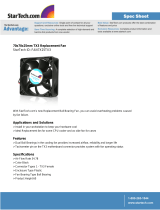
6 TX3-CX-1 Installation Manual Version 1.1
LT-6618 Copyright 2019
Welcome
1.1 The TX3-CX-1 Single Door Controller
The TX3-CX Card Access System is part of the Mircom suite of products that
provide building ready monitoring, control and integrated security solutions for
use in the high end multi-tenant residential market.
The TX3-CX-1 Single Door Controller has all the features for an entry level
access control application with the flexibility for scalability. It is an innovative
PoE controller with a built-in proximity reader that can be used stand alone or
networked using either RS-485 or TCP/IP.
Note: To comply with UL 294, use TX3-CX-1 as a standalone device.
1.2 Features
Simple - Simply mount TX3-CX-1 onto a single gang electrical box and connect
CAT-5/6 cable for both power and network communication.
Flexible - Power the TX3-CX-1 by either 12 VDC, 24 to 48 VDC or PoE.
Network the controller by RS-485 or TCP/IP.
Versatile - TX3-CX-1 has a built-in 125 kHz proximity reader for interior
applications. A Wiegand card reader can be added for outside the door.
Scalable - The TX3-CX-1 may be used stand alone or networked to other TX3
platform devices for up to 63 nodes, if using the RS-485 network. There is no
limit if TCP/IP is used.
1.3 Configuration
See LT-980 Card Access System Manual on the Mircom website for detailed
information on the configurable features of the TX3-CX-1 and its modes of
operation.
1.3.1 PC Configurator Software
Use the Configurator software to fully configure the system. See the following
documentation:
• LT-995 Configuration and Administration Guide
• LT-973 TX3 Software Guide






















